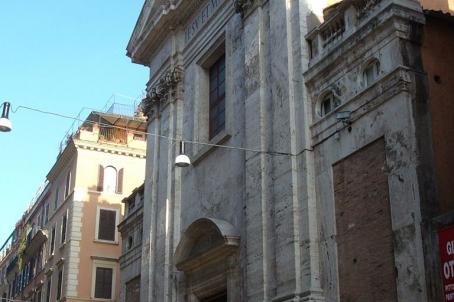Chiesa di Santa Maria dei Miracoli

The church of Santa Maria dei Miracoli is popularly known as one of the twin churches of Santa Maria in Montesanto (it is the one on the right), although the two structures differ mainly in their layout. This church is due to the reconstruction between 1675 and 1679 of an ancient medieval church affected by its proximity to the Tiber. In 1793 the church was assigned to the Confraternity of the Blessed Sacrament and in 1856 to the Arciconfraternita di San Gregorio Taumaturgo. Since 1915, the church has been officiated by the priests of the Sacred Heart of Jesus of Betharram, who previously occupied the church of the Holy Guardian Angels of Triton, which has now disappeared.





